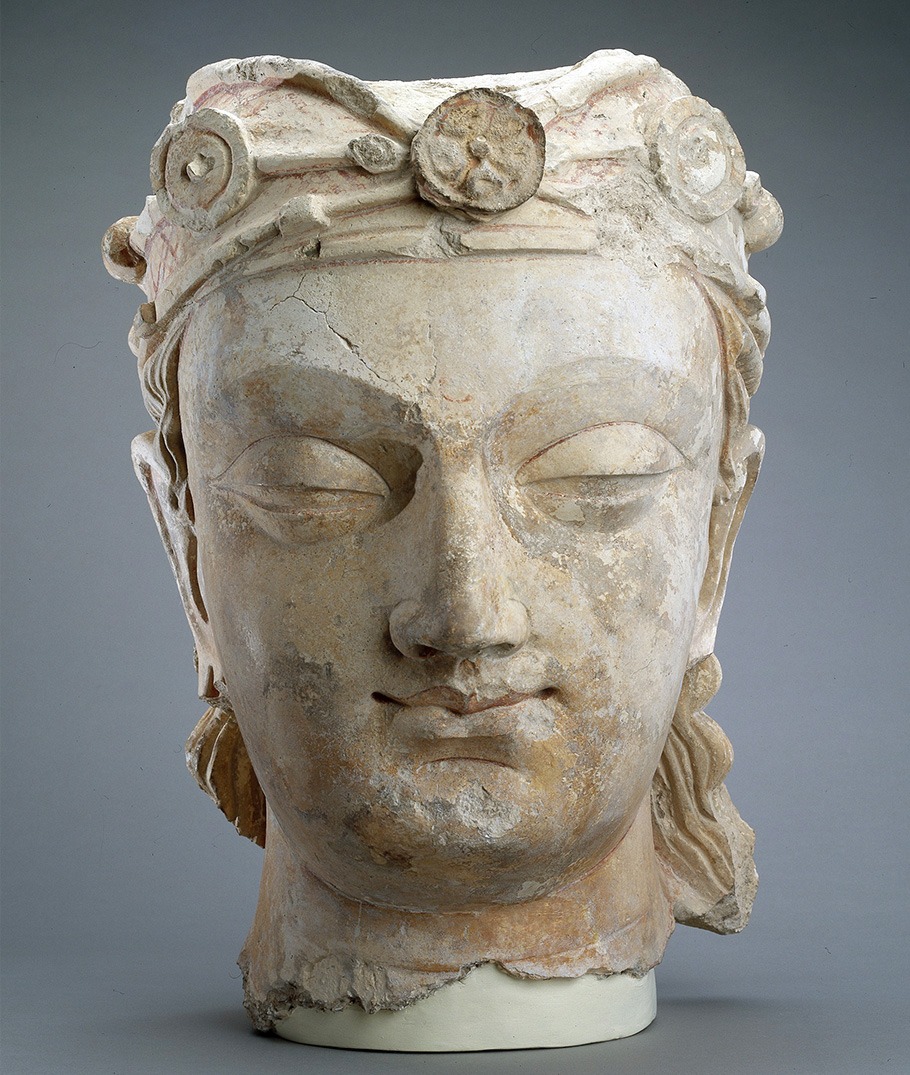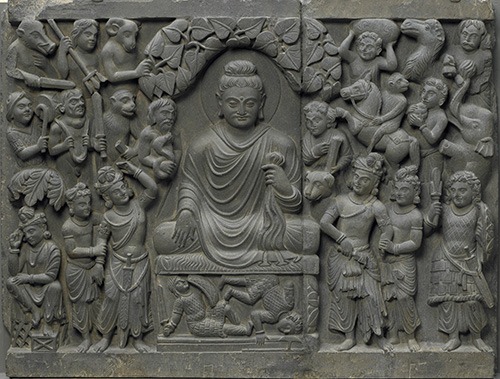 ? ?
? ?
In ancient Gandhara (modern-day Afghanistan and Pakistan), stucco was commonly used for sculptures and decorations on Buddhist monastic buildings. Heads were made of a solid mixture of clay and stucco (lime, sand, and water) and attached with dowels to the bodies. Stucco sculptures were often set into niches to protect them from the elements. But because the bodies were made of a softer mixture, they rarely survived.
The use of stucco in this region persisted for centuries. Even the two monumental buddhas at Bamiyan in Afghanistan, which were made in the fifth century and destroyed in 2001, were coated with a layer of stucco.

Alexander the Great (356–323 BCE) led his army to the banks of the Indus River in modern-day Pakistan. When Alexander died, command of this eastern empire passed to his general, who was subsequently defeated by an Indian emperor, Chandragupta Maurya (321–297 BCE). This region thus became a center of contact and exchange between the Indian and Mediterranean worlds. Buddhism quickly spread into the area. This process is reflected in the Questions of Milinda, a Buddhist text that describes the conversion of a Greek king by an Indian monk.This Gandharan frieze, on view in Freer gallery 2, also features Greek-inspired imagery.